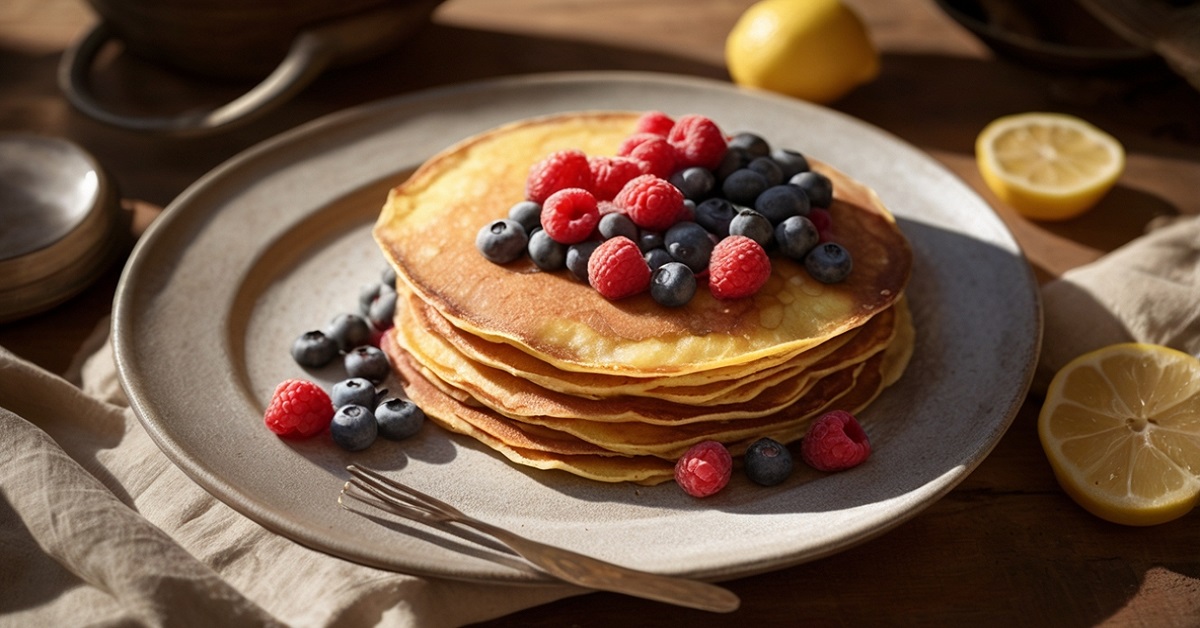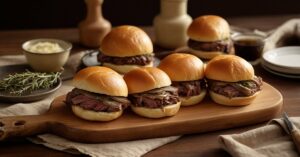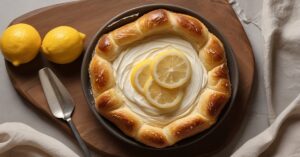Baked German Pancake it’s the kind of recipe that sneaks up on you. When I was 19, my old pastry chef whispered this to me at 6:07 a.m., covered in flour, sugar on her boots: “You wanna impress someone without trying? Make a Dutch baby.” She meant a baked German pancake. And she wasn’t wrong.
This is a dish that looks like it took you a culinary masterclass and three assistants to pull off but you can whisk it together with bedhead and a cold pan. It’s got that soufflé energy.
All drama and puff in the oven, golden-custard center, crisp buttery edges. Slightly eggy, almost crepe-like, but with enough comfort to rival a biscuit breakfast.
So let’s crack into it.
Ingredients & Substitutions
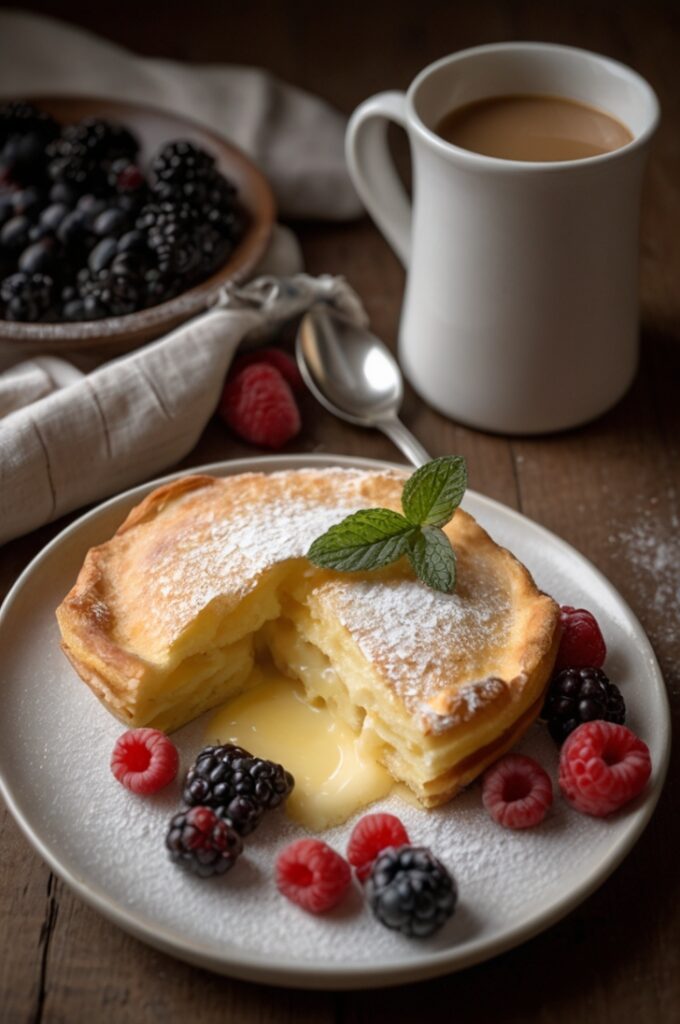
Here’s what you’ll need for a classic Baked German Pancake:
- 3 large eggs, room temp if you remember
- ½ cup whole milk (2% works fine, but don’t go skim unless you wanna cry)
- ½ cup all-purpose flour
- 2 tbsp granulated sugar
- 1 tsp vanilla extract
- ¼ tsp kosher salt
- 2 tbsp unsalted butter (for the pan)
Want to riff? You can.
- Non-dairy milk? Sure. Oat milk does best, almond works too just avoid anything too watery or sweetened.
- Gluten-free? Use a good 1:1 GF flour blend. Don’t go straight almond flour it’s too heavy and flops.
- Egg sub? Tougher ask, but aquafaba (the liquid from a can of chickpeas) can get you close in structure, though not flavor.
- Butter alt? Ghee or coconut oil for a deeper flavor, or plant butter if you need dairy-free.
One note: don’t mess with the egg-to-flour-to-milk ratio unless you like disappointment. That puff comes from balance. Mess that up, and the pancake will sit there like a sad omelet.
Step-by-Step Instructions
1. Preheat the oven to 425°F.
Throw the skillet in while it heats. You want it blazing hot before the batter hits. That’s how you get that dramatic lift.
2. Blend the batter.
Whisk eggs, milk, flour, sugar, salt, and vanilla until smooth. Or blitz it in a blender no shame. Just no lumps, yeah?
3. Melt the butter in the hot skillet.
Once your oven hits temp, pull out the pan (careful, hot!) and drop in the butter. Swirl it quick so it coats the whole bottom.
4. Pour in the batter and go.
Right into the pan. Don’t hesitate. Batter should sizzle just a little when it hits. Then back in the oven, middle rack, 18–22 mins.
5. Bake until puffed and deeply golden.
It’ll balloon like a golden parachute. The center’ll be soft but set. Edges should brown up like caramel toast.
6. Don’t open the oven mid-bake.
Seriously. It’ll deflate. Wait ‘til it’s golden. Then you can peek.
Common Mistakes to Avoid
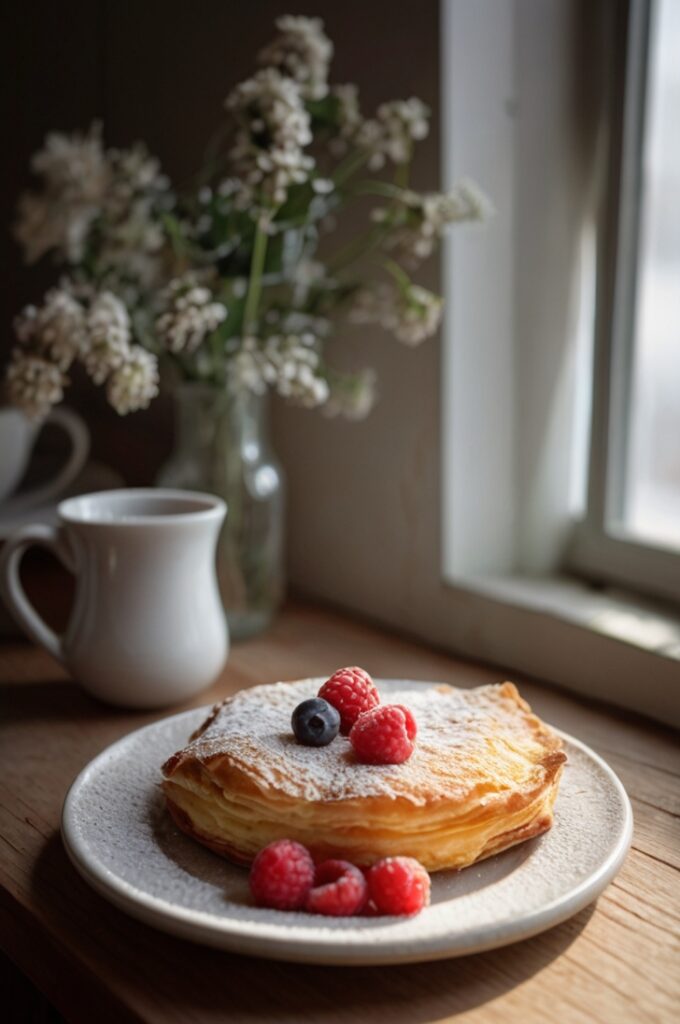
- Cold batter + cold pan = flop. You want contrast: cold batter, hot pan. That’s how you get the steam and rise.
- Too much flour? Makes it chewy. It ain’t bread. Keep it light.
- Pan too small? Pancake won’t rise properly. Use a 10–12” cast iron or similar.
- Overbake? And it’ll be tough and dry in the center. Aim for just set, a tiny jiggle in the middle is fine.
Cooking Techniques & Science
This pancake puffs because of steam. Eggs and milk in a loose batter? That’s like rocket fuel when it hits hot metal. The water content in the batter evaporates fast in a hot oven, lifting the structure like a popover. Eggs help it set. Flour gives it bones.
Cast iron works best because it holds heat. A regular metal cake pan’ll do, but it won’t give you that crispy edge or even heat bounce.
And never underestimate the power of preheating the skillet. That’s the difference between “meh” and “wow, is this a soufflé?”
Bonus: this technique’s old. Like 1800s immigrant brunch culture old. German settlers in the U.S. Pacific Northwest started baking these for church brunches and Sunday tables, long before anyone thought to Instagram it.
Variations to Try
Sweet-tooth in full swing?
- Add a pinch of cinnamon or nutmeg to the batter.
- Top with lemon juice + powdered sugar (classic).
- Stew some apples or berries, toss them on top.
- A dollop of whipped cream doesn’t hurt.
Feeling savory?
- Skip the sugar and vanilla. Add chopped chives and black pepper.
- Top with sautéed mushrooms, a soft egg, and a drizzle of brown butter.
- Crumbled goat cheese or grated Gruyère for the win.
Serving & Pairing Suggestions
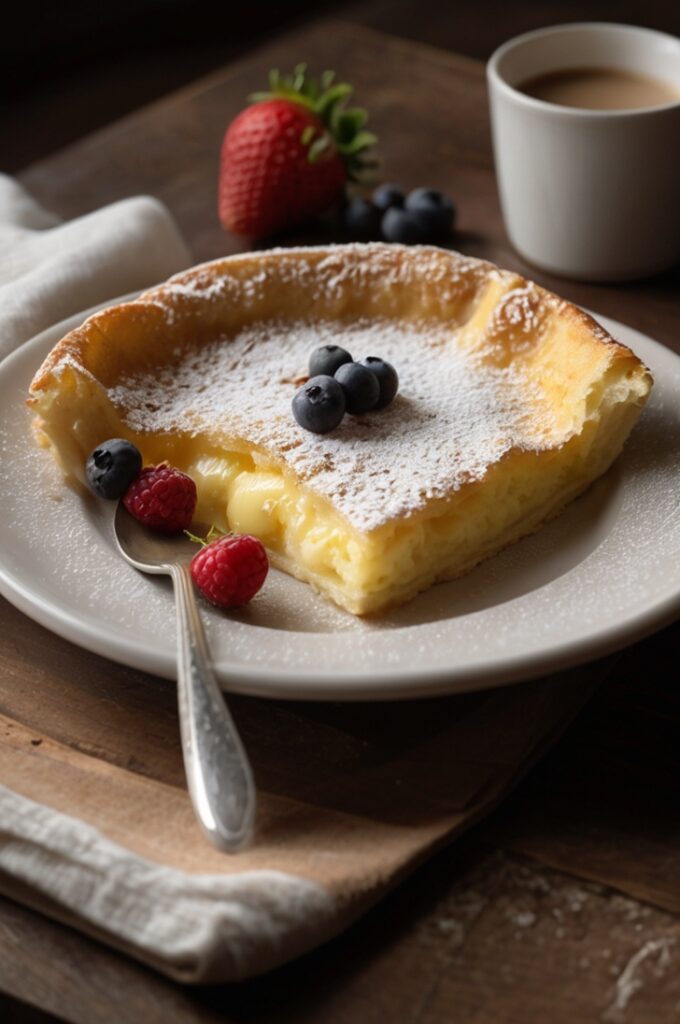
Don’t serve it flat. Let the puff shine. Bring it to the table in the skillet if you can. That golden curl around the edge is half the story.
Cut into wedges, dust with powdered sugar, serve hot.
Great with:
- Fresh berries and Greek yogurt
- Espresso or milky coffee
- Crispy bacon or breakfast sausage
- A drizzle of maple syrup, or even honey butter
Wanna go extra? Warm up some cherry compote or roasted peaches. Or serve with crème fraîche and thyme-roasted tomatoes for a brunch twist that slaps.
FAQs About Baked German Pancake
1. Can I make the batter ahead of time?
Yep up to 12 hours in advance. Just whisk again before baking, as flour might settle.
2. Why did my pancake not puff?
Usually because the pan wasn’t hot enough. Or you opened the oven door mid-bake. Or maybe the eggs were too cold. Temp is everything here.
3. Can I make this without a cast iron skillet?
Yes, but results vary. Use a metal baking dish or heavy oven-safe pan. Avoid glass it heats unevenly and might shatter if too cold.
4. Is this freezer-friendly?
Not really. Texture turns rubbery. Better to eat it fresh. If you have leftovers, reheat in a 350°F oven for 5–7 mins to crisp it up again.
5. Can I double the recipe?
Yes, but don’t just dump it into a bigger pan it won’t puff right. Use two separate pans or bake in batches.
Final Thoughts from the Line
Baked German pancakes are one of those things you make once and suddenly you’re making them every weekend. They’re forgiving, quick, and absolutely glorious in a way that makes people think you’re way fancier than you are.
The puff will fall. That’s normal. Don’t mourn it.
Treat it like a canvas. Add what you love. Keep the technique sharp, and the rest? That’s flavor play.
And don’t forget the pan’s hot when it comes out. More burns have happened over this pancake than I care to admit.


